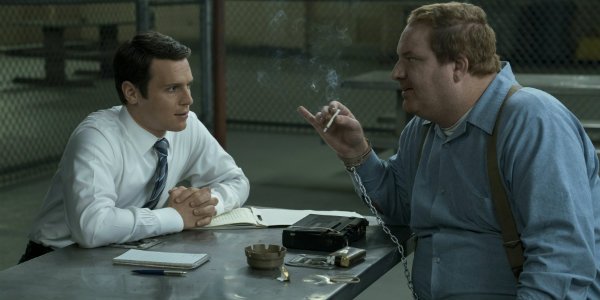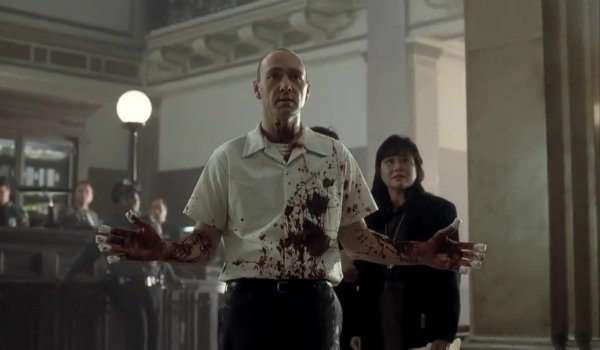Why Mindhunter's Jonathan Groff Likes That The Show Kept Most Of The Violence Offscreen

Warning: mild spoilers ahead for Netflix's Mindhunter!
Even in the face of its overwhelming darkness and brooding atmosphere, Netflix's Mindhunter has managed to resonate with many fans. The David Fincher series explores some of the most demented aspects of serial killer pathology, but it also features almost no on-screen violence. I recently had the chance to sit down with Mindhunter's Jonathan Groff at a Netflix press day in Los Angeles, to ask him about why that omission of gore works for the show. And he explained that part of David Fincher's MO involves letting the audience members use their imagination for the brutality. Groff explained:
David said something when we were at a Q&A in London. He thinks the cinematic experience is 25% sound 25% picture and 50% audience. I think the audience bringing their imagination to the words, even that scene at the end of episode 6 where we're walking through the house and you see the bathtub and the sink and the knife while she's describing what happened, allows you to project and imagine, and the show to me, what is most exciting about it, is that it has people in rooms talking, and asking people to watch a TV show like they're reading a novel. It's asking them to use their imagination. It's asking them to pay attention, and it's asking them to lean in, and I think in a world where there's so much TV, to ask someone to do that is a huge risk. Because it's David it is what it is, but to me, that has been the big relief, is that people are leaning in., They're using their imagination and engaging I think in a totally different way.
Film and television are predominately visual mediums, but that doesn't mean that everything needs to be shown on the screen. As Jonathan Groff laid out in our discussion; implying violence has helped the Mindhunter audience use its collective imagination to conjure up disturbing imagery that's arguably more effective than anything they could show you. Asking the audience to lean in and think about the murders instead of passively consuming them was a gamble, but it appears to be one that has paid off.
This idea is something that David Fincher has generally used well over the course of his career as a filmmaker. In particular, his work on 1995's Se7en similarly employed this technique -- as the victims of John Doe are almost always found long after their deaths. We almost never see anyone die on-screen in that particular film, but it has developed a reputation as one of the more disturbing and brutal films of the 1990s (if not of all time).

That's not to say that Mindhunter doesn't have its fair share of violence and brutality. The show opens with a brutal suicide by a deranged, gun-wielding criminal, and we see several crime scene photos that are nothing if not gory. However, the show leans far more on long dialogue sequences to build its tension and atmosphere (something that probably wouldn't be possible on a traditional network), and it has helped endow Mindhunter with an almost literary sensibility.
Mindhunter is currently streaming on Netflix, but you can check out CinemaBlend's fall premiere guide to see what else is on the horizon for the next few months! Beyond that, make sure to keep up with The Cord Cutter Podcast to listen to everything we here at CinemaBlend have to say about the world of streamable content!
Your Daily Blend of Entertainment News
Originally from Connecticut, Conner grew up in San Diego and graduated from Chapman University in 2014. He now lives in Los Angeles working in and around the entertainment industry and can mostly be found binging horror movies and chugging coffee.

